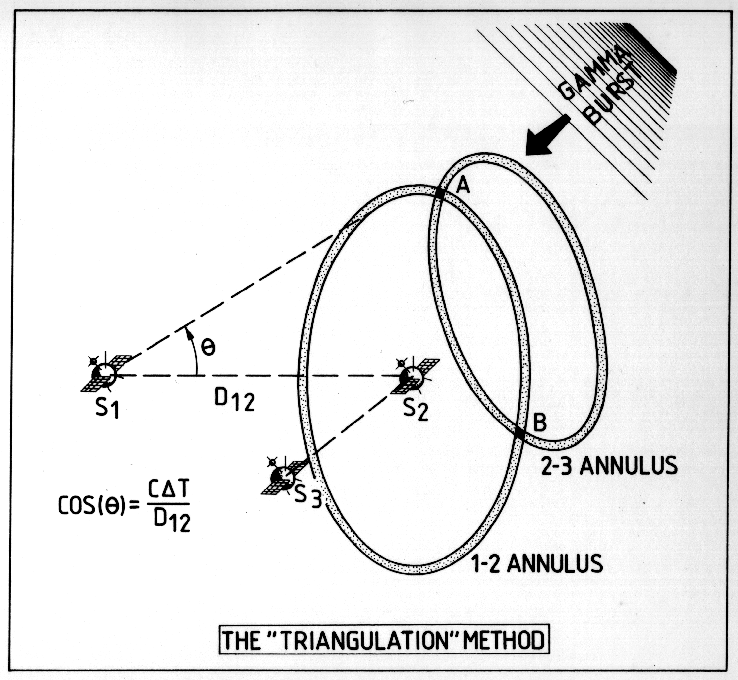
The following diagram demonstrates how the IPN functions:

One measures the arrival time of a burst at each satellite. You could imagine that if the burst were along a line that connects a pair of satellites, then the closer satellite would detect it first. If both satellites detect it at the same time, you know it's half-way between them. Since we do not know that the burst lies along such a line, this comparison only tells us the angle to the burst, relative to that line. This angle is valid for any orientation around the line, which is the definition of a circle on the sky. (Uncertainties in the measurement widen the circle to an annulus.) A GRB source anywhere within that annulus would arrive at the two satellites in question at the times measured by the detectors.
If you have more than two satellites, you can use more than one line, and hence have more than one annulus. The burst source must therefore lie where the annuli cross each other. One of the most spectacular successes of the IPN was when 11 satellites detected a giant burst on March 5, 1979. The annuli from all the pairs of available satellites constrained the burst to be coming from within a supernova remnant within the Large Magellanic Cloud.

The color image shows the brightness of the remnant, while the white box indicates the region where all the annuli cross over each other. |